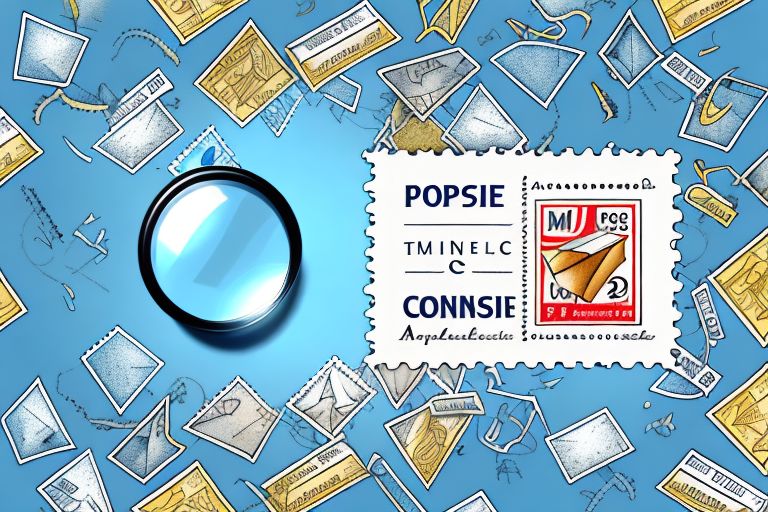Understanding Postal Insurance Rates and Maximizing Your Value
Shipping packages through the postal service offers convenience and reliability, but it's essential to safeguard your valuables against potential risks. Postal insurance provides financial protection against loss or damage during transit, ensuring peace of mind. In this comprehensive guide, we'll delve into the intricacies of postal insurance, exploring its importance, operational mechanisms, various coverage types, factors influencing rates, and strategies to obtain the best value for your investment.
Importance of Postal Insurance for Your Shipments
Shipping valuable or fragile items can be stressful without adequate protection. Postal insurance mitigates the risk of financial loss by covering the declared value of your items in case of loss or damage.
According to the 2023 Postal Services Report, approximately 5% of packages experience some form of damage or loss during transit. Having insurance ensures that you receive compensation promptly, allowing you to replace your items without significant delays.
How Postal Insurance Operates: A Detailed Overview
Postal insurance operates by allowing senders to declare the value of their shipment and pay a corresponding premium based on this declared value. In the event of loss or damage, you can file a claim to receive compensation equivalent to the declared amount. It's crucial to understand that coverage limits and exclusions apply, so reviewing the policy terms is essential.
Claim Filing Process
Filing a claim typically involves submitting documentation such as receipts, invoices, and proof of value. According to ShipScience's Claims Guide, timely submission of accurate information expedites the compensation process.
Coverage Limitations
Different insurance policies have varying coverage limits and may exclude certain items like perishable goods or hazardous materials. Always verify the eligibility of your items before purchasing insurance.
Types of Postal Insurance and Their Coverage Options
Postal services offer a range of insurance options tailored to different shipping needs:
- Priority Mail Express Insurance: Covers up to $100 or the declared value, whichever is lower.
- Priority Mail Insurance: Provides coverage up to $50 or the declared value, whichever is lower.
- First-Class Mail Insurance: Offers coverage up to $5,000 or the declared value, whichever is lower.
- Registered Mail Insurance: Covers up to $50,000 or the declared value, whichever is lower.
For high-value items, Registered Mail Insurance is recommended due to its extensive coverage limits.
Key Factors Influencing Postal Insurance Rates
The cost of postal insurance is influenced by several factors:
- Declared Value: Higher-value items incur higher premiums.
- Shipping Distance: Longer distances can increase insurance costs.
- Shipping Speed: Expedited services like overnight shipping often have higher insurance rates.
- Item Type: Fragile or perishable items may attract additional costs.
- Packaging Quality: Properly packaged items reduce the risk of damage, potentially lowering insurance rates.
- Carrier Selection: Different carriers offer varying insurance rates and policies.
Understanding these factors can help you make informed decisions when selecting insurance options.
Calculating Postal Insurance Costs for Your Shipments
Accurately calculating postal insurance costs involves considering the item's value, shipping destination, and service level. Most postal services provide online calculators to estimate premiums based on these factors.
For example, ShipScience's Insurance Calculator allows you to input the item's value, weight, and destination to receive an accurate cost estimate.
Tips for Accurate Calculations
- Accurate Valuation: Ensure the declared value reflects the item's true worth.
- Service Selection: Choose a shipping service that aligns with your delivery timeline and insurance needs.
- Proper Packaging: Invest in quality packaging to minimize the risk of damage and potential claims.
Comparing Postal Insurance Rates Across Providers
To find the most cost-effective insurance option, compare rates and coverage from different postal service providers. Consider factors such as coverage limits, claim processes, and customer reviews.
Evaluating Provider Reputation
Assessing provider reputation through customer reviews and industry ratings can help ensure reliable service and support during claims.
Utilizing Comparison Tools
Use online comparison tools like ShipScience's Insurance Comparison to evaluate multiple providers simultaneously, saving time and effort.
Maximizing Value: Tips for Purchasing Postal Insurance
To obtain the best value from your postal insurance, consider the following strategies:
- Accurate Declaration: Declare the true value of your items to avoid underinsurance or overpayment.
- Compare Multiple Quotes: Research and compare insurance rates from various providers.
- Assess Risk: Determine the necessity of insurance based on the item's value and shipping conditions.
- Invest in Quality Packaging: Proper packaging reduces damage risk and may lower insurance premiums.
- Leverage Additional Services: Utilize tracking and signature confirmation for added security.
Implementing these tips ensures you receive comprehensive coverage without unnecessary expenses.
Handling Lost or Damaged Packages: Steps for Buyers and Sellers
In case your package is lost or damaged, follow these steps to facilitate a smooth claims process:
- Document the Issue: Take photographs of the damage and retain all shipping receipts.
- Notify the Carrier: Contact your postal service provider immediately to report the issue.
- File a Claim: Submit a detailed claim with all required documentation through the postal service's official channels.
- Follow Up: Stay in communication with the carrier to track the claim's progress.
For detailed procedures, refer to the ShipScience Claims Process Guide.
Avoiding Common Mistakes When Purchasing Postal Insurance
To ensure effective use of postal insurance, avoid the following common pitfalls:
- Incorrect Valuation: Failing to accurately declare the item's value can lead to insufficient coverage.
- Insufficient Coverage: Choosing a coverage level that doesn't match the item's value poses financial risks.
- Neglecting to Compare Providers: Overlooking different providers may result in higher costs or inadequate coverage.
- Poor Packaging: Inadequate packaging increases the likelihood of damage and complicates claims.
- Ignoring Policy Terms: Not understanding the policy can lead to unexpected exclusions or claim denials.
Thoroughly reviewing policy terms and ensuring proper shipment preparation can help you avoid these mistakes.
Filing a Postal Insurance Claim: A Step-by-Step Guide
If your package is lost or damaged, filing a claim promptly is crucial for receiving compensation. Follow these steps to ensure a successful claim:
- Gather Documentation: Collect all necessary documents, including receipts, invoices, and proof of shipment.
- Contact the Carrier: Reach out to your postal service provider to initiate the claim process.
- Submit the Claim: Fill out the required forms accurately and attach all supporting documents.
- Monitor the Claim: Keep track of your claim status and respond to any additional requests from the carrier.
- Receive Compensation: Once approved, you will receive compensation based on the declared value.
For more information, refer to the ShipScience Claim Filing Instructions.
Choosing Between Private Shipping Companies and USPS: Pros and Cons
When selecting a shipping carrier, consider the benefits and drawbacks of private shipping companies versus the United States Postal Service (USPS).
Private Shipping Companies
- Pros: Often offer faster delivery times, advanced tracking features, and specialized services for fragile or high-value items.
- Cons: Typically higher shipping and insurance costs compared to USPS.
United States Postal Service (USPS)
- Pros: Generally more affordable shipping rates, extensive network coverage, and reliable insurance options.
- Cons: Slower delivery times for certain services and potentially less comprehensive tracking features.
Evaluate your shipping needs, budget, and required delivery speed to determine the best carrier for your packages.
USPS Claims and Complaints Handling for Postal Insurance
If you encounter issues with USPS postal insurance, such as unresolved claims or dissatisfaction with the service, it's essential to address them promptly.
Filing a Complaint
To file a complaint with USPS, visit the USPS Customer Service Page and follow the outlined procedures. Providing detailed information and documentation will support your case.
Appealing a Claim Decision
If your claim is denied, you have the right to appeal the decision. Submit a formal appeal along with any additional supporting documents to strengthen your case.
For assistance, contact USPS customer service representatives who can guide you through the appeals process.
Conclusion: Securing Your Shipments with Effective Postal Insurance
Postal insurance is a vital component of the shipping process, offering financial protection and peace of mind. By understanding the various insurance options, accurately calculating costs, comparing providers, and following proper procedures for claims, you can ensure that your valuable items are well-protected during transit. Implementing best practices in packaging and declaration further enhances your shipping experience, allowing you to focus on your personal or business needs without undue worry about potential losses.
For more resources and tips on shipping and postal insurance, visit the ShipScience Resources Center.






















